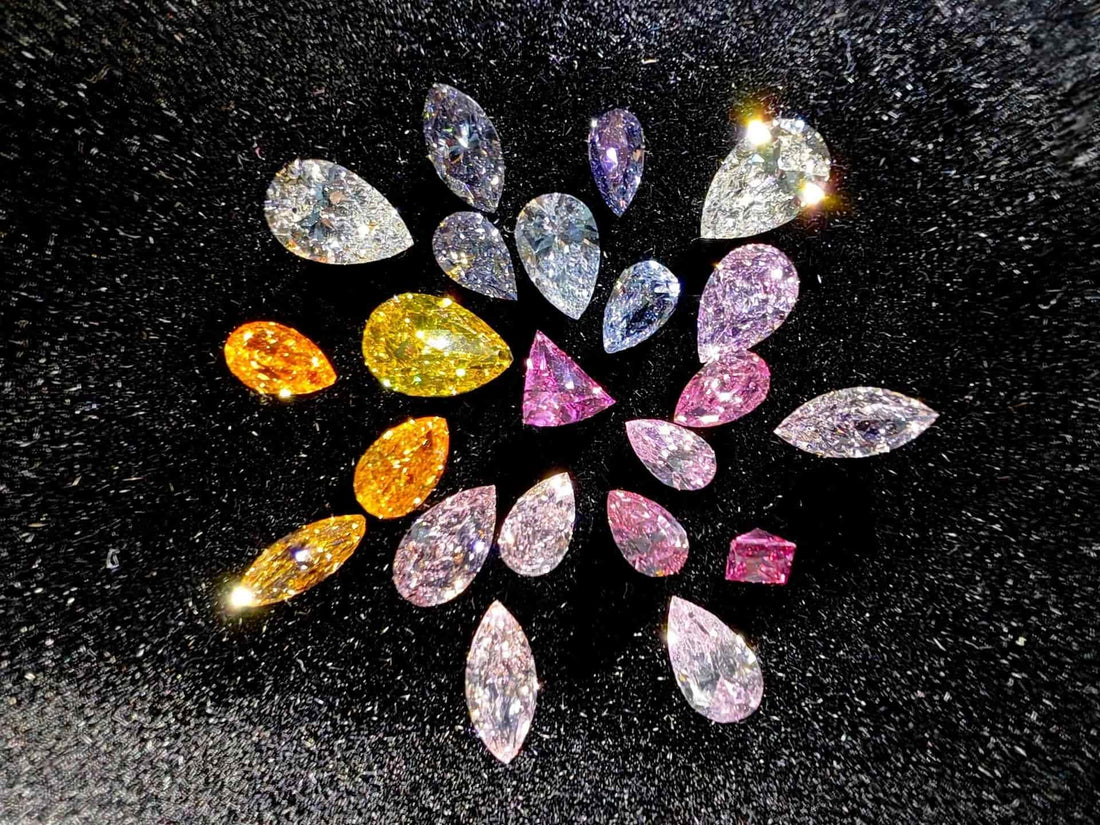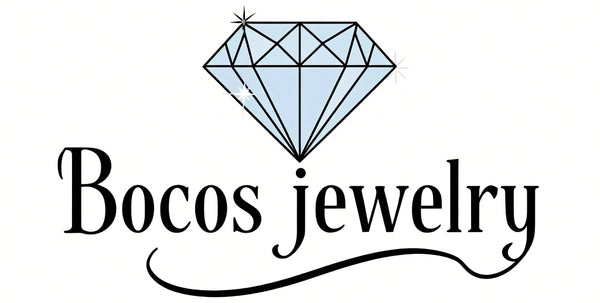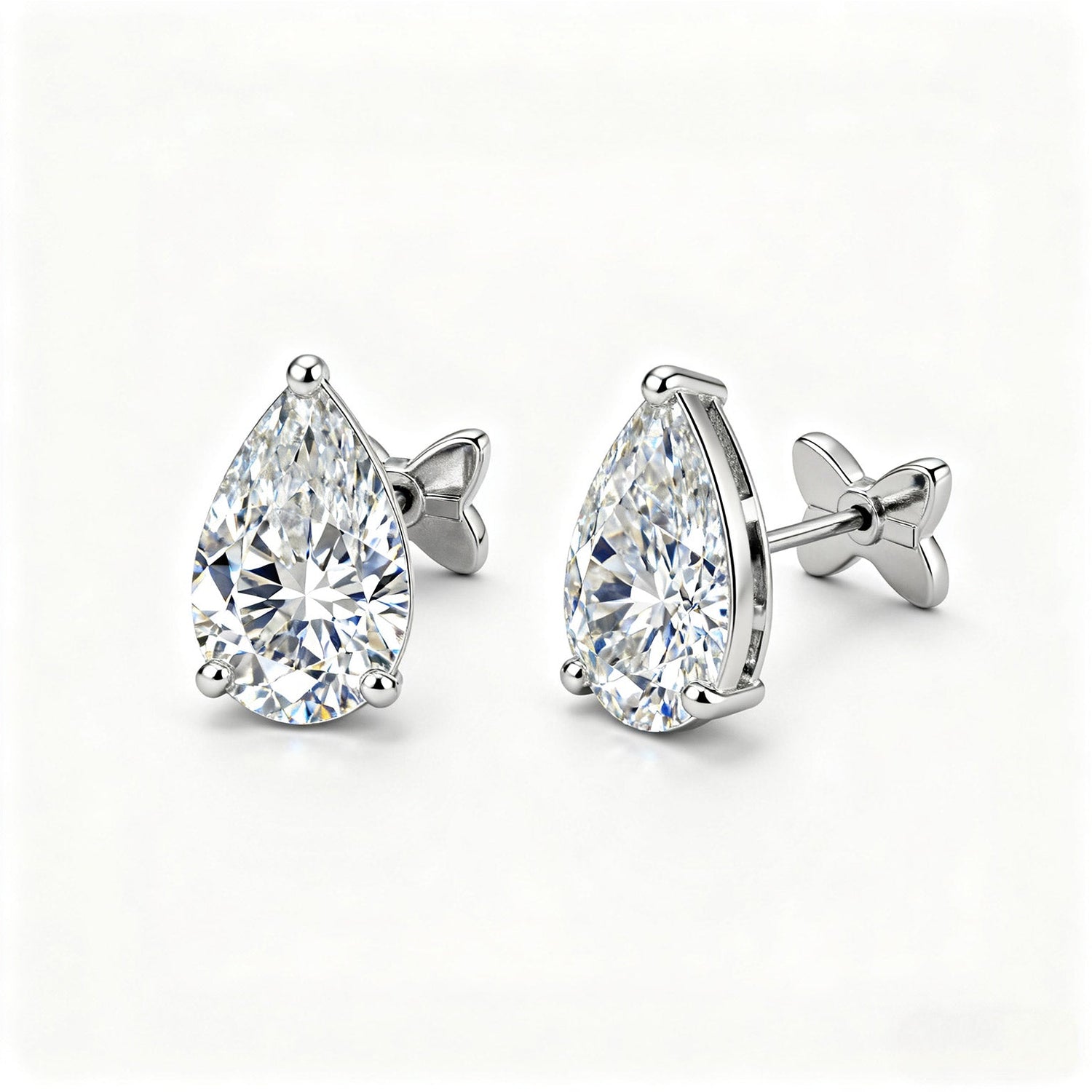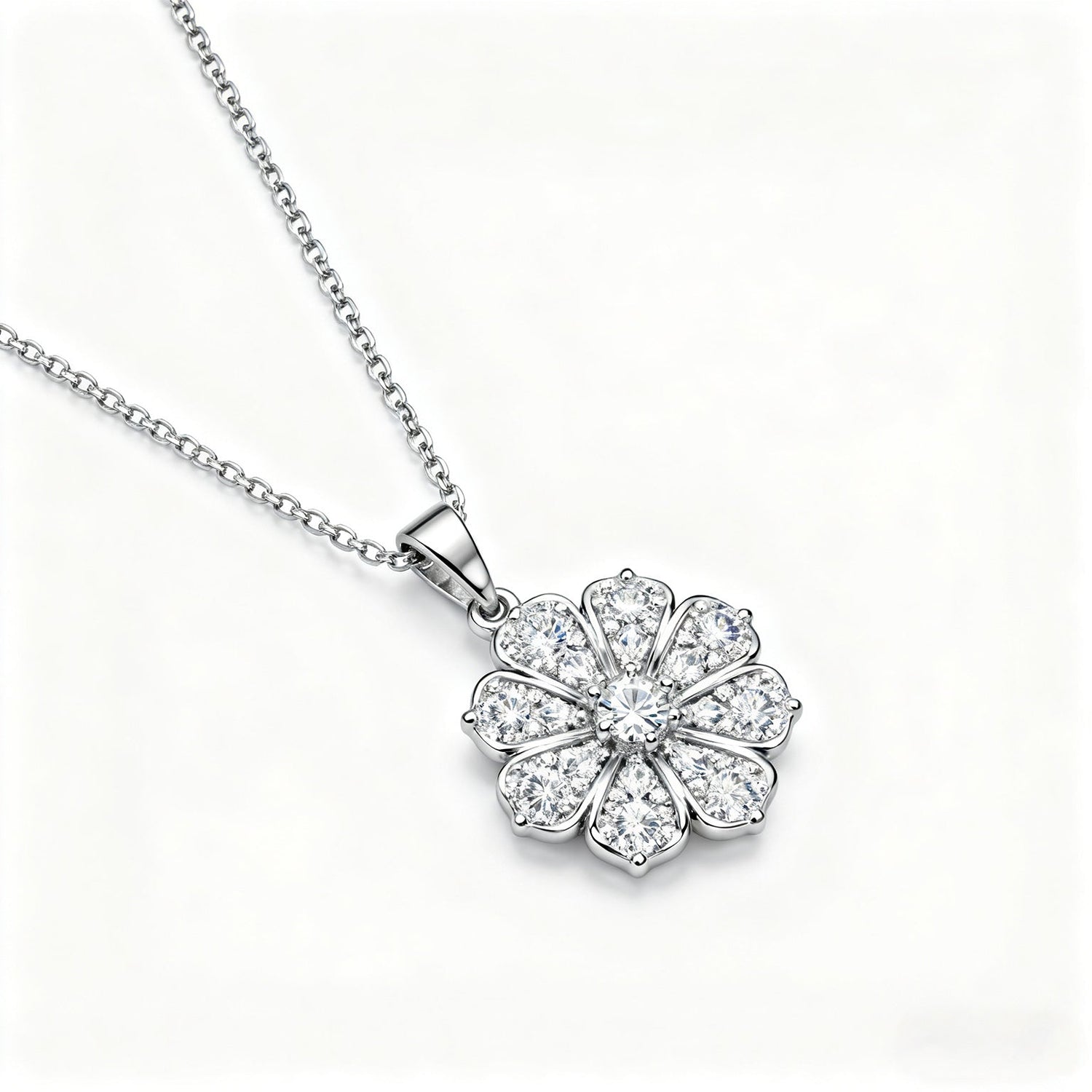
What is Moissanite and how is it different from a diamond?
When you pause before a jewelry store window, captivated by a ring shimmering with rainbow-like fire, what you're seeing likely isn't a diamond—it's moissanite. Dubbed the "stellar gem," this rising star is reshaping the jewelry landscape with its unique allure.
Chapter 1: Stellar Origins – The Journey from Meteorite to Engagement Ring
A Beautiful Misunderstanding
In 1893, French scientist Dr. Henri Moissan made an unexpected discovery while examining shiny crystals in an Arizona meteor crater. The Nobel Prize winner was initially overjoyed, believing he had found diamonds. Further testing, however, revealed he had actually encountered a mineral never before seen on Earth: silicon carbide (SiC).
A Gift from the Stars
This meant Dr. Moissan had discovered a "gem from the stars." Natural moissanite is exceptionally rare on Earth, primarily found in meteorites. This cosmic origin gives moissanite its inherent mystique and unique charm.
A Laboratory Marvel
Due to the scarcity of natural moissanite, every piece we see in jewelry today is lab-created. By meticulously controlling temperature and pressure, scientists successfully replicate its cosmic formation environment. When you wear moissanite, you're not just adorning yourself with a beautiful gem—you're carrying a legend that spans millennia.
Chapter 2: The Science of Beauty – Why Does Moissanite Sparkle So Intensely?

Optical Performance That Surpasses Diamond
Moissanite's brilliance isn't a marketing gimmick; it's grounded in solid science. Let the data speak:
Refractive Index (RI): This measures a gem's ability to bend light. Diamond's RI is 2.42, while moissanite's ranges from 2.65 to 2.69. A higher RI means more intense light reflection, creating more dazzling brilliance.
Dispersion Value: This quantifies "fire" (rainbow flashes). Diamond's dispersion is 0.044, while moissanite's is 0.104—more than double that of diamond! This is the fundamental reason for its spectacular visual impact.
Unique Double Refraction
Under magnification, you might notice slight doubling of facet edges in moissanite. This occurs because light splits into two rays upon entering the crystal—a phenomenon not seen in diamonds. Importantly, this characteristic doesn't detract from the gem's face-up beauty and actually serves as a key identification feature.
The Perfect Companion for Daily Wear
On the Mohs scale, moissanite scores an impressive 9.25, second only to diamond's 10. This level of hardness means it can resist scratches from virtually all substances encountered in daily life—be it computer keyboards, kitchenware, or other jewelry. For a lifetime engagement ring, its durability is beyond question.
Chapter 3: The Ultimate Showdown – Moissanite vs. Diamond Detailed Comparison

Fire & Appearance: A Dialogue Between Science and Aesthetics
Diamonds are renowned for their classic white sparkle, representing timeless luxury. Moissanite, however, stands out with its intense "fire"—rainbow flashes under light.
In actual wear, many consumers report that moissanite often appears more eye-catching than diamonds in certain lighting conditions. Emily Chen, a fashion blogger from California, shares her experience: "After choosing a moissanite engagement ring, the question I get most is, 'Why does your ring sparkle so much?' Even in dimly lit restaurants, it projects enchanting rainbow colors."
Durability: Practical Considerations for Daily Wear
While diamond has a slight edge in absolute hardness, moissanite's 9.25 rating far exceeds daily wear requirements. Consider these facts:
-
Rubies and sapphires (hardness 9) are already considered heirloom gems
-
Everyday dust has a hardness of about 7-7.5, significantly lower than moissanite
-
With normal wear, moissanite maintains its luster for decades
Price: A Detailed Analysis of the Value Revolution
Let's illustrate with concrete numbers for a 1-carat stone with VS clarity and excellent cut:
-
Natural Diamond: $6,000 - $12,000
-
Lab-Grown Diamond: $2,500 - $4,500
-
High-Quality Moissanite: $400 - $800
This price difference means consumers choosing moissanite can select larger stones or more elaborate designs within the same budget. Michael Rosenberg, a New York interior designer, explains: "I chose a 2-carat moissanite engagement ring for my fiancée—a size that would have been completely beyond our budget if we'd opted for diamond."
Ethics & Environment: The Conscious Choice for Modern Consumers
The environmental damage and ethical controversies surrounding natural diamond mining are well-documented. Specific issues include:
-
Land disruption: Approximately 250 tons of ore mined per carat of diamond
-
Water pollution: Chemicals from mining can contaminate water sources
-
Energy consumption: Diamond mining is extremely energy-intensive
In contrast, moissanite's lab-creation process involves:
-
Zero mining-related environmental damage
-
Minimal water consumption
-
No "blood diamond" concerns
-
Significantly lower carbon footprint
Chapter 4: Buying Guide – How to Select Top-Quality Moissanite

Establishing a New Quality Assessment Framework
Similar to diamond's 4Cs, high-quality moissanite should be evaluated based on:
Color: The Epitome of Technological Evolution
Early moissanite might display slight yellow, gray, or green tints under certain lighting. Today, top-tier brands produce colorless moissanite (like Charles & Colvard's Forever One series) that holds its own even alongside D-F color top-grade diamonds.
Clarity: A Blessing of the Lab
Thanks to controlled growth environments, most high-quality moissanite is "eye-clean"—exceptionally pure internally with virtually no visible inclusions or flaws.
Cut: Where the Soul Resides
Cut is the most crucial factor determining moissanite's beauty. An excellent cut requires precise calculation of every facet to reflect light along the optimal path, maximizing fire and brilliance. Inferior cuts, aimed at cost-saving, cause light leakage through the bottom, robbing the gem of its sparkle.
Certification & Warranty
Purchase from reputable sellers who provide proper certification and comprehensive warranties. Established brands typically offer lifetime warranties, ensuring long-term protection for your investment.
Chapter 5: Truth Revealed – Addressing Common Concerns
"Does moissanite lose its sparkle over time?"
Absolutely not. Moissanite itself is extremely stable and will never fade or deteriorate. If it appears less brilliant, it's likely due to oil, soap, or dust buildup on the surface. Simple cleaning instantly restores its original radiance.
"Isn't it just a 'fake diamond'?"
This is the biggest misconception. Moissanite isn't a diamond imitation but an independent gem with its own unique identity and optical properties. We advocate viewing it as a distinctive choice that's more brilliant, eco-friendly, and intelligent.
"Does the hardness difference between 9.25 and 10 really matter?"
For daily wear, the difference is negligible. The Mohs scale isn't linear. A hardness of 9.25 already surpasses ruby and sapphire and is sufficient to withstand a lifetime of wear—unless you intentionally scratch it with a diamond.
Chapter 6: Market Trends – Why Discerning Consumers Choose Moissanite

The Rise of Conscious Consumption
Modern consumers increasingly reject excessive brand markups and artificially created scarcity. Obtaining equal or superior visual impact for a tenth or even a twentieth of diamond's price—that's the ultimate value proposition.
Awakening Environmental Awareness
Lab-grown means zero mining. No environmental destruction, no "blood diamond" controversies—your beautiful choice is kinder to our planet.
The Pursuit of Individual Expression
Moissanite represents a new generation of consumers brave enough to break traditions, avoid blind conformity, and use knowledge and taste to make the smartest decisions for themselves.
The Perfect Symbol for Modern Love
Moissanite is no longer merely a diamond "alternative." It's a marvel combining cosmic romance, modern technology, ethical consumption, and supreme aesthetics.
It shows us that true luxury doesn't have to be built on immense environmental costs and wealth consumption. True brilliance can come from intelligent minds and hearts that take responsibility for the future.
When making your life's important choices, remember: what matters most isn't tradition in others' eyes, but a symbol that truly reflects your values and love story. This gem, inspired by the stars and crystallized by human wisdom, with its unique rainbow fire, provides the perfect footnote for modern love.
Choosing moissanite isn't just selecting a gem—it's embracing an attitude of intelligence, confidence, and contemporary living. In this era that values substance and meaning, let your token of love shine with both cosmic romance and earthly wisdom.




